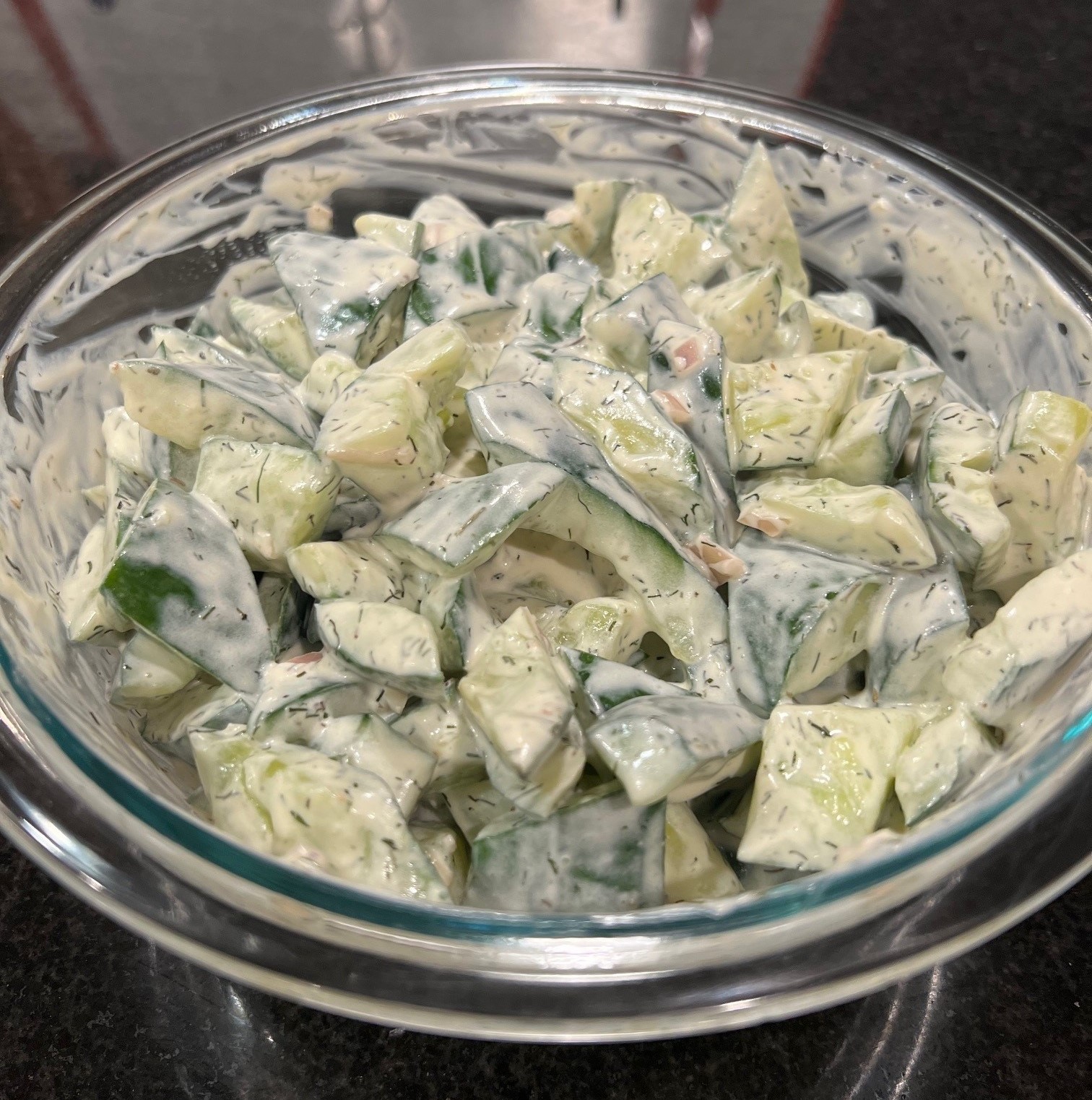I decided to try the recipe for “Simply Dilly Cukes” again, but with two adjustments: 1) smashing the cucumbers and 2) making a homemade Italian dressing. Popularized in Asia, smashing “cracks the vegetable’s taut skin and creates inroads for the dressing,” according to Amanda Hesser’s The Essential New York Times Cookbook: The Recipes of Record (202). And rather than using a bottled, processed dressing, I used Betty Crocker’s The Big Red Cookbook’s recipe for Italian dressing, as I had all of the ingredients on hand.
Fun and a Wee Bit Messy
To prepare the cucumbers, I followed Hesser’s instructions.
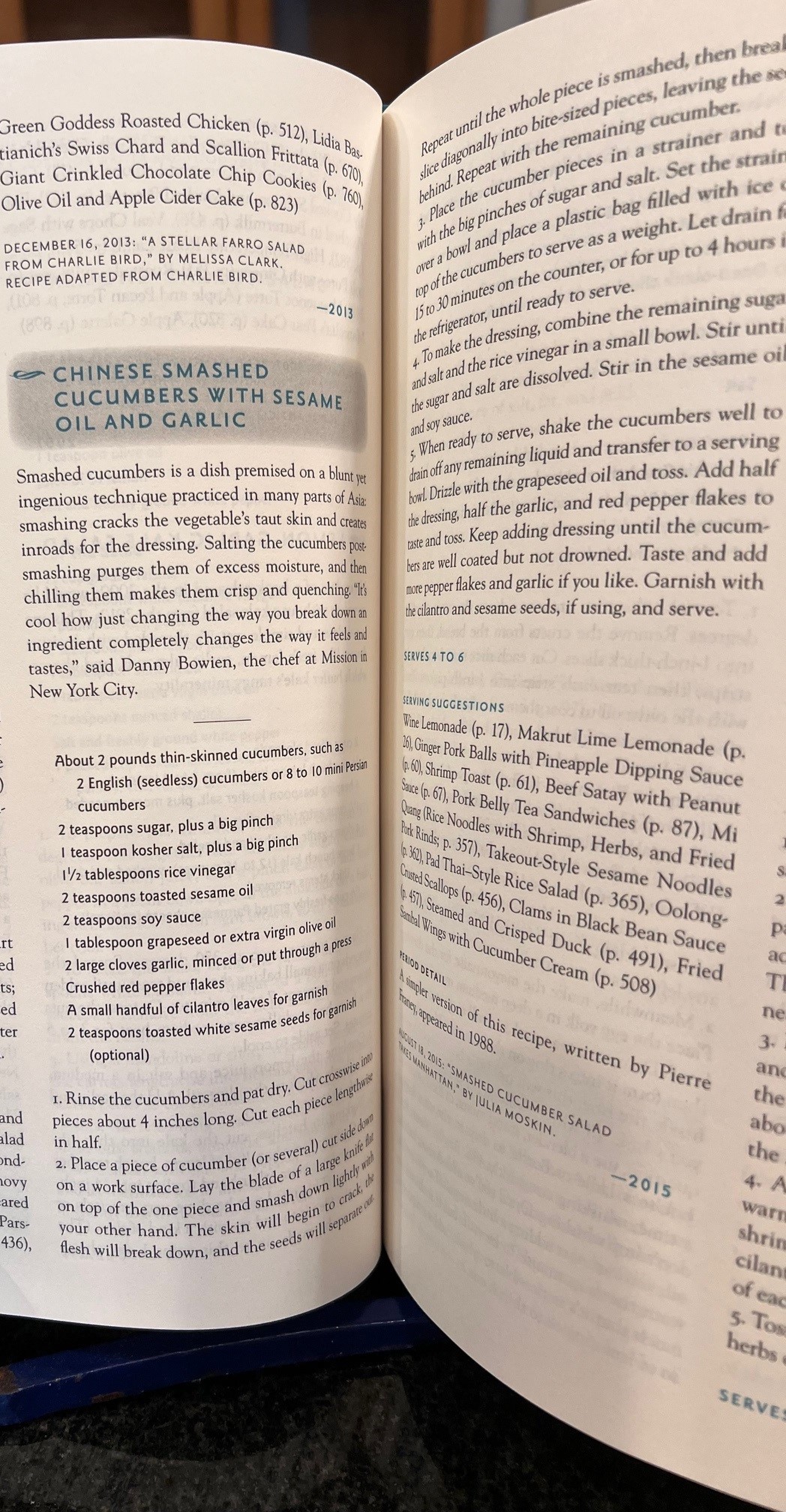
First, I cut the three English cucumbers into four-inch sections and then again in half.
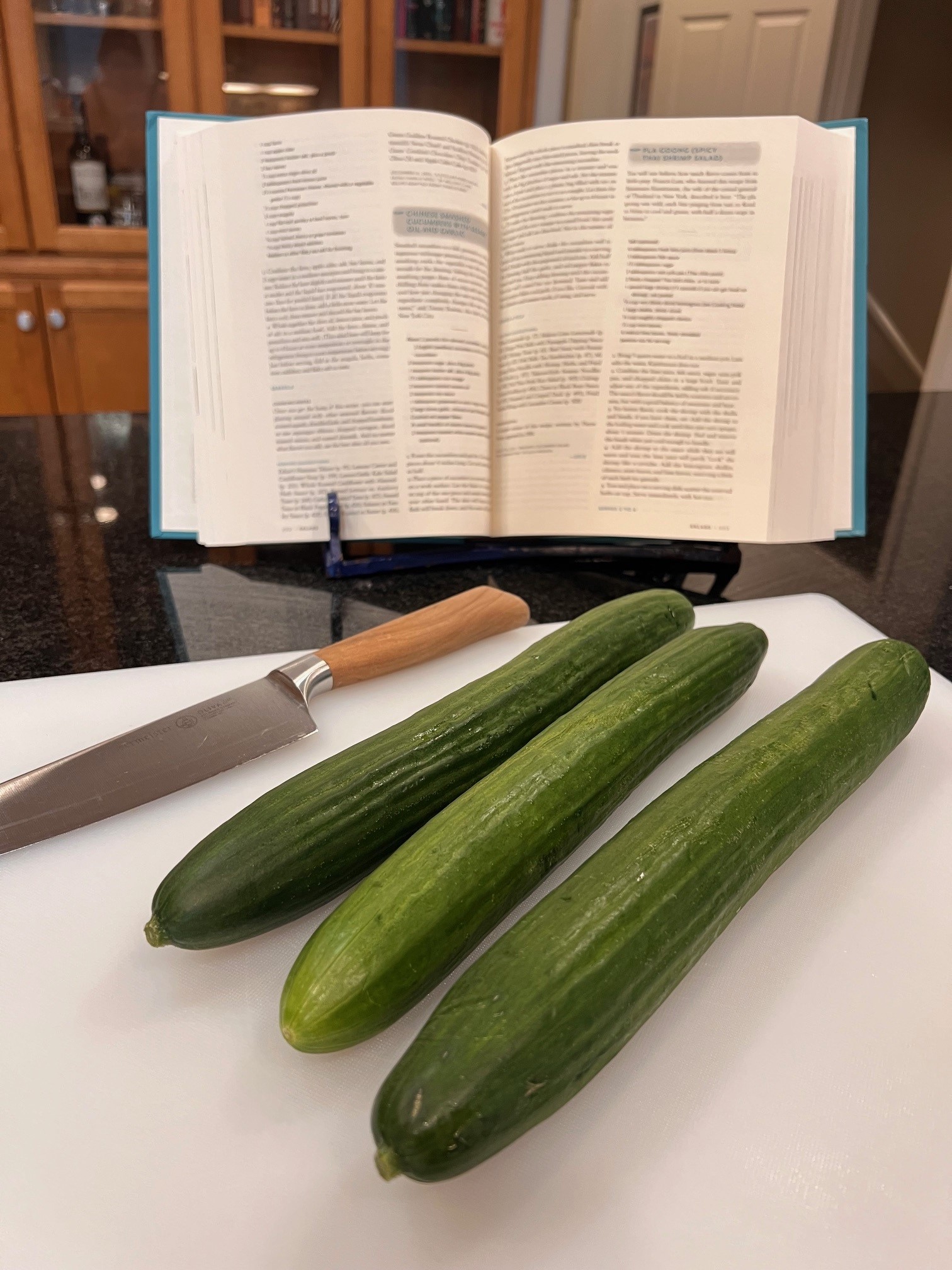

The next step was to place a wide knife blade on the skin side of each half-section and to strike it with the heel of my palm, effectively smashing the cucumber into the cutting board, similar to a common technique for peeling garlic cloves.
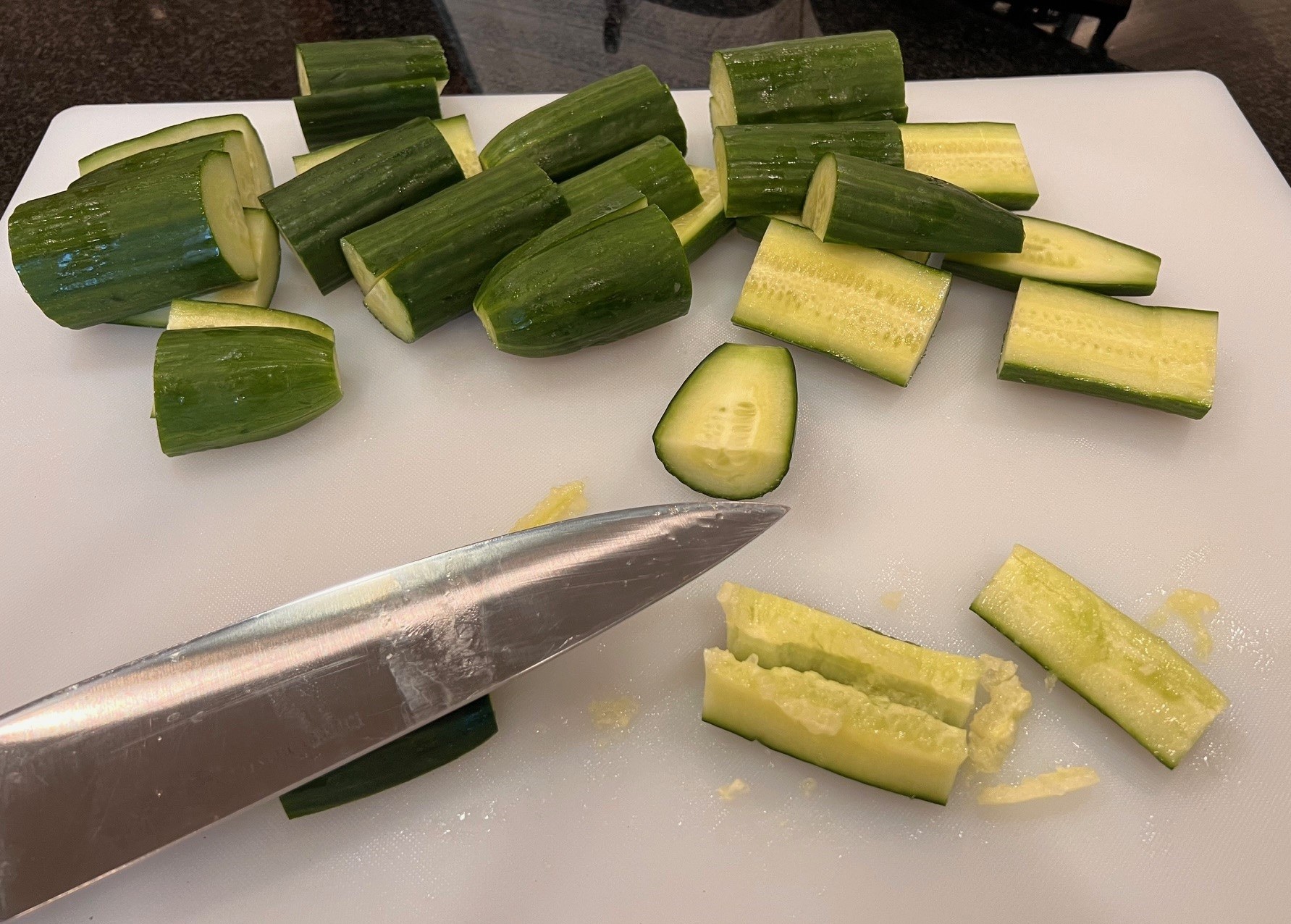
This was fun! It was also messy, as the cucumber seeds and excess moisture occasionally would splatter. But it was so lovely to not have to do much work to remove the seeds, as they had been knocked out with the pressure of the knife and my hand.
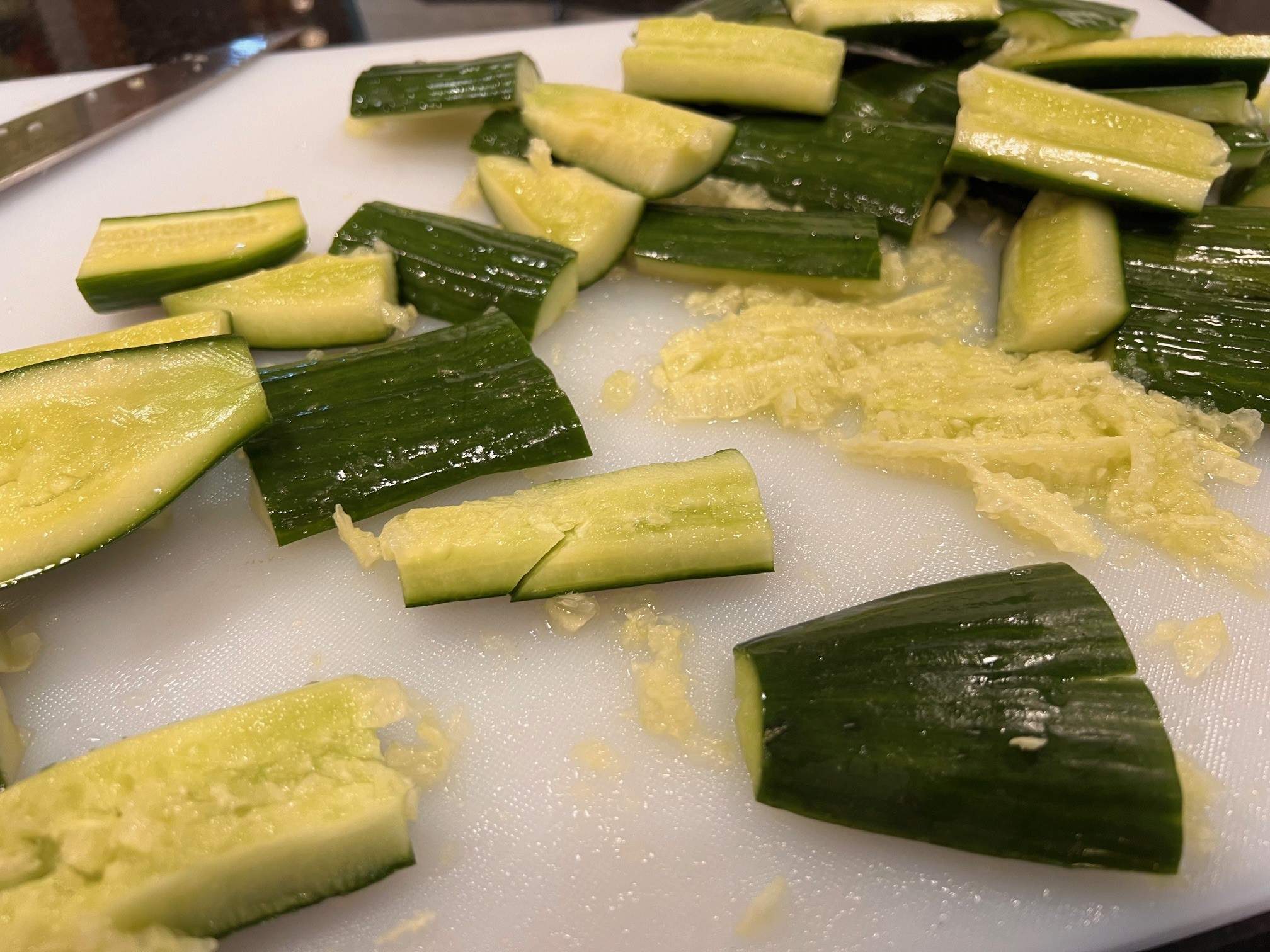
After this, I followed the instructions to cut the flattened pieces into bite-sized morsels, which I decided to do at an angle to replicate the spears prescribed in Geraldine Florence’s original recipe.
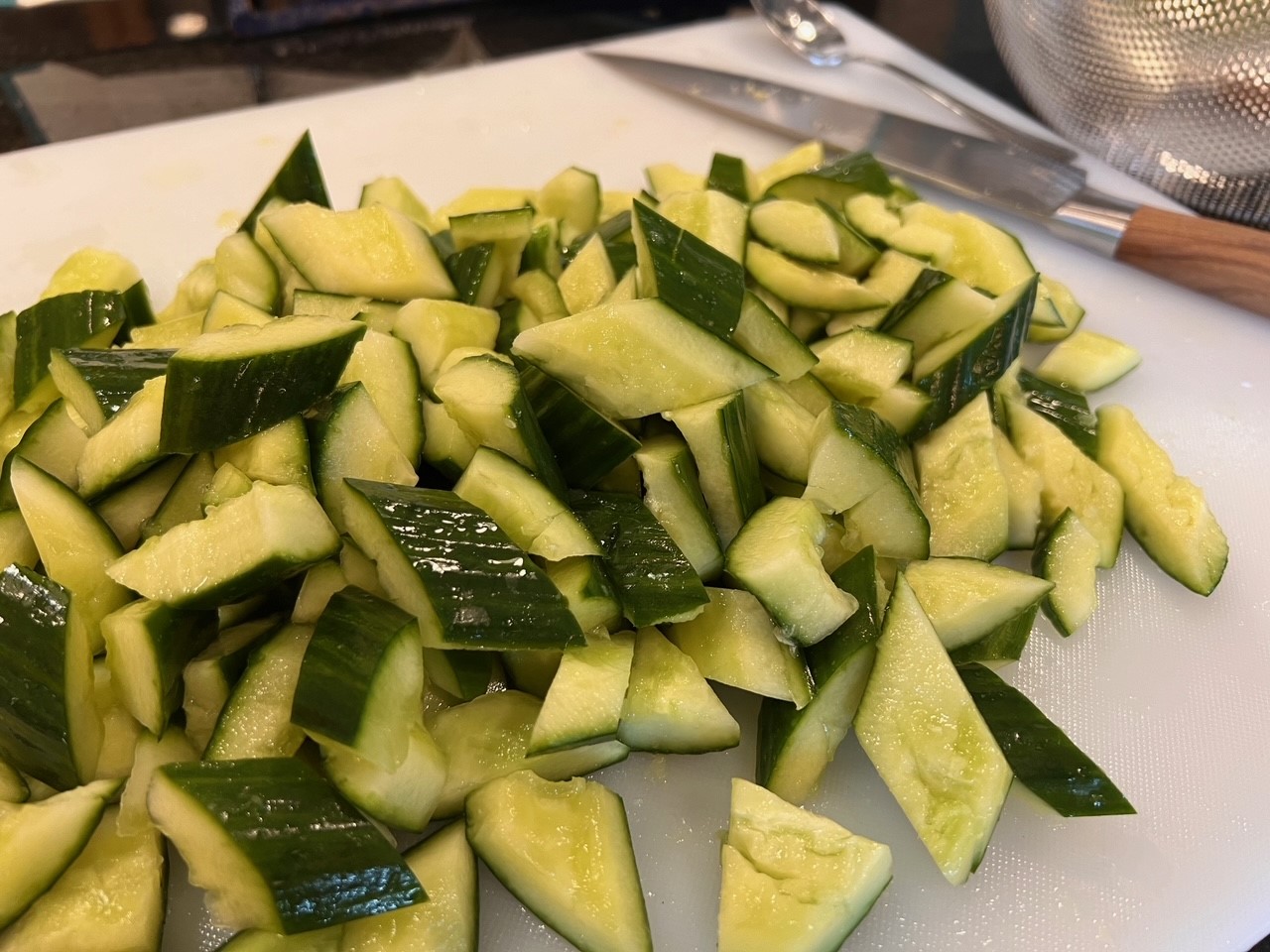
Cucumbers are notoriously watery, hence their popularity as makeshift eye masks. Thus, Hesser’s instructions include an opportunity to reduce that moisture. To do this, I piled the cucumber spears into my largest colander, resting on the rim of one of my large mixing bowls, and tossed the cucumber with the recommended pinches of kosher salt and sugar before weighing the cucumbers down with the rest of my set of nesting mixing bowls and finally moving it to the fridge to drain for a few hours.

Then, I turned to the homemade Italian dressing, chopping garlic, two tablespoons of shallots in lieu of onion and pouring over it three quarters of a cup of extra virgin olive oil and half a cup of apple cider vinegar. This was a slight adjustment—my version of the “Lighter Italian Dressing” note from Betty Crocker—which prescribes apple juice I did not have on hand.
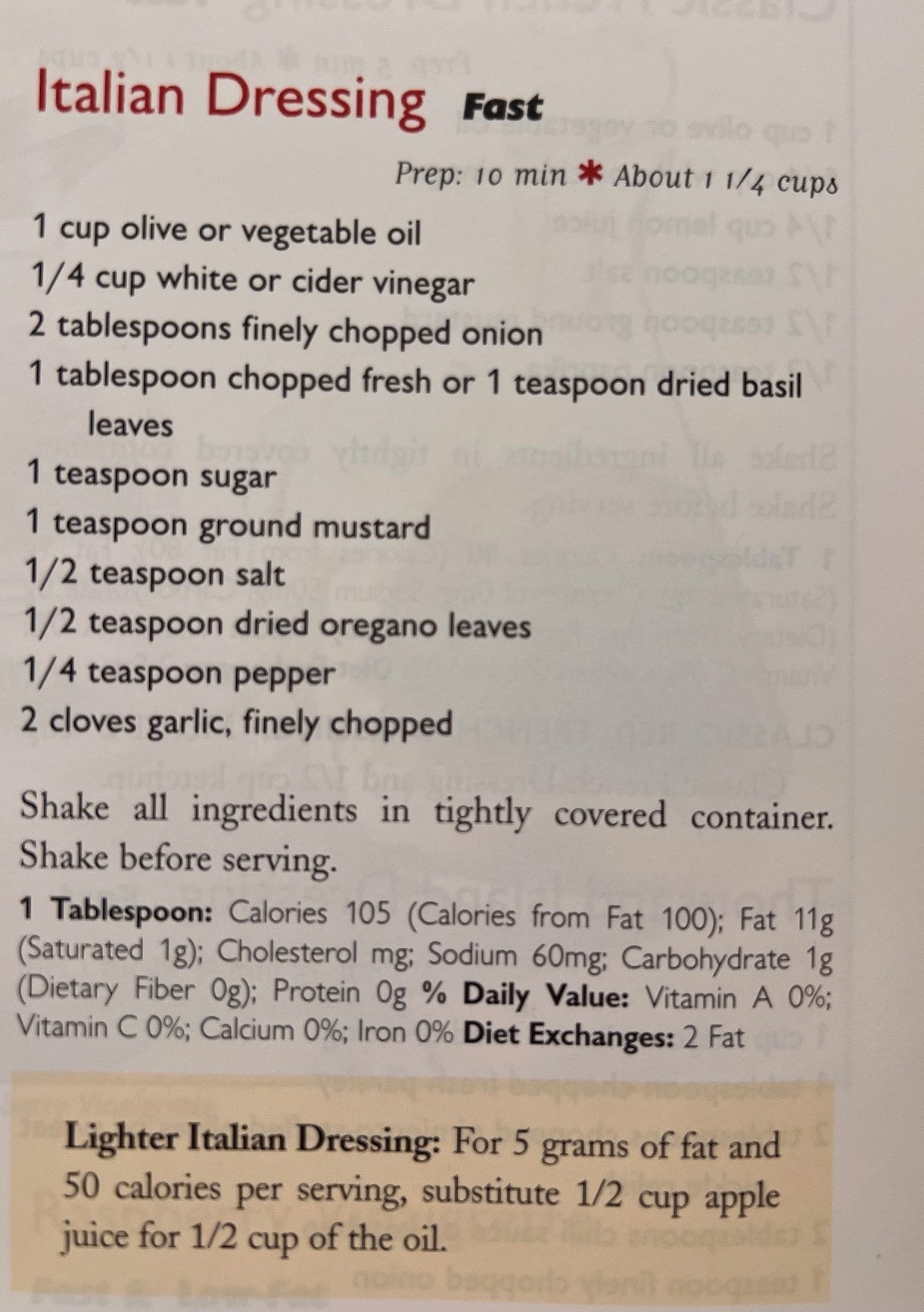
I added chopped basil fresh from my patio, the ground mustard, dried oregano, sugar, salt and pepper, whisked it all together, and let it meld, though I soon served it with the requisite green salad at dinner.
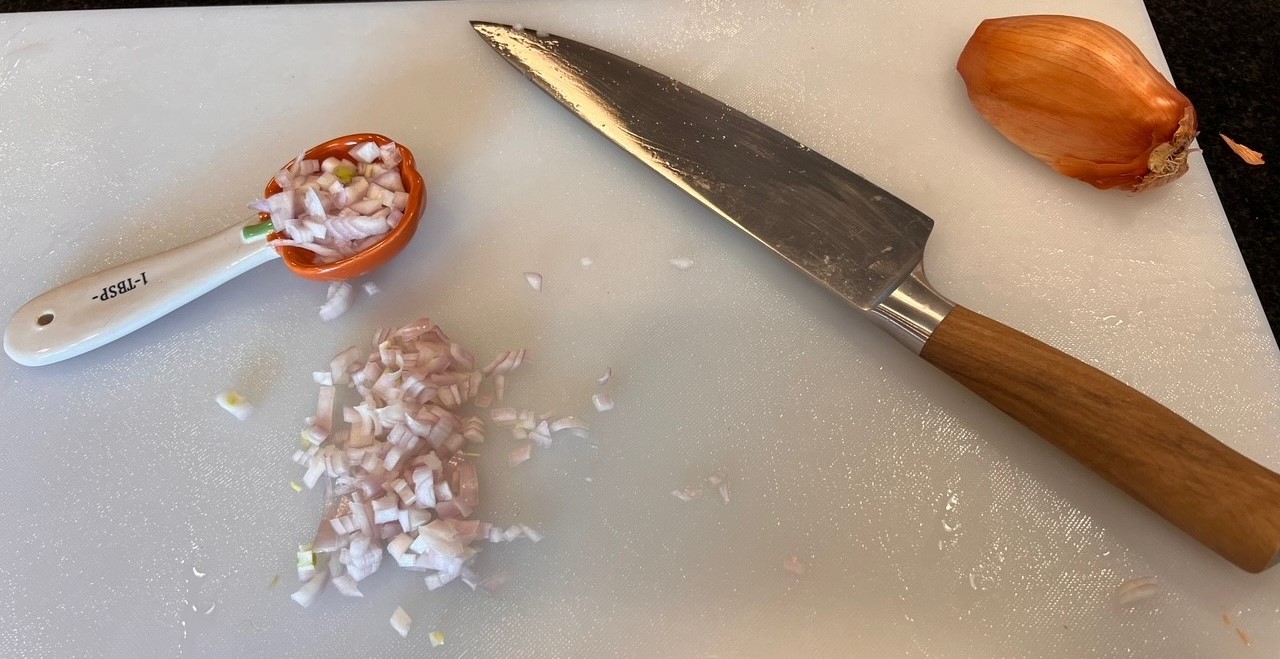


After getting my daughter to bed, I returned to the kitchen, delighted by how much moisture had drained from the cucumbers, and commenced mixing “Simply Dilly Cukes” with my adapted ingredients.
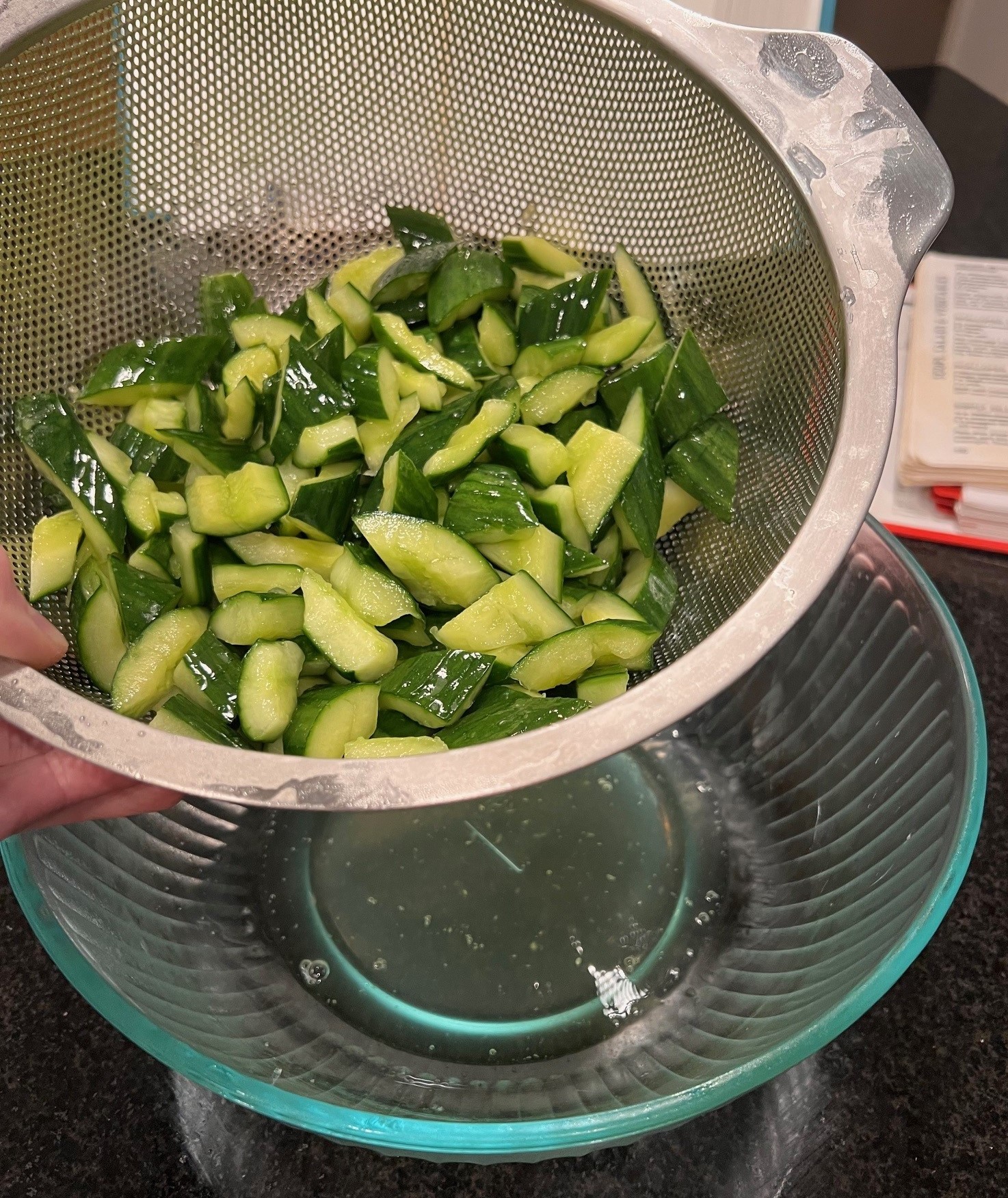
On this occasion, I followed the instructions to combine the half cup of dressing with the equivalent amount of sour cream and the dried dill from my pantry prior to pouring it over the cucumbers.
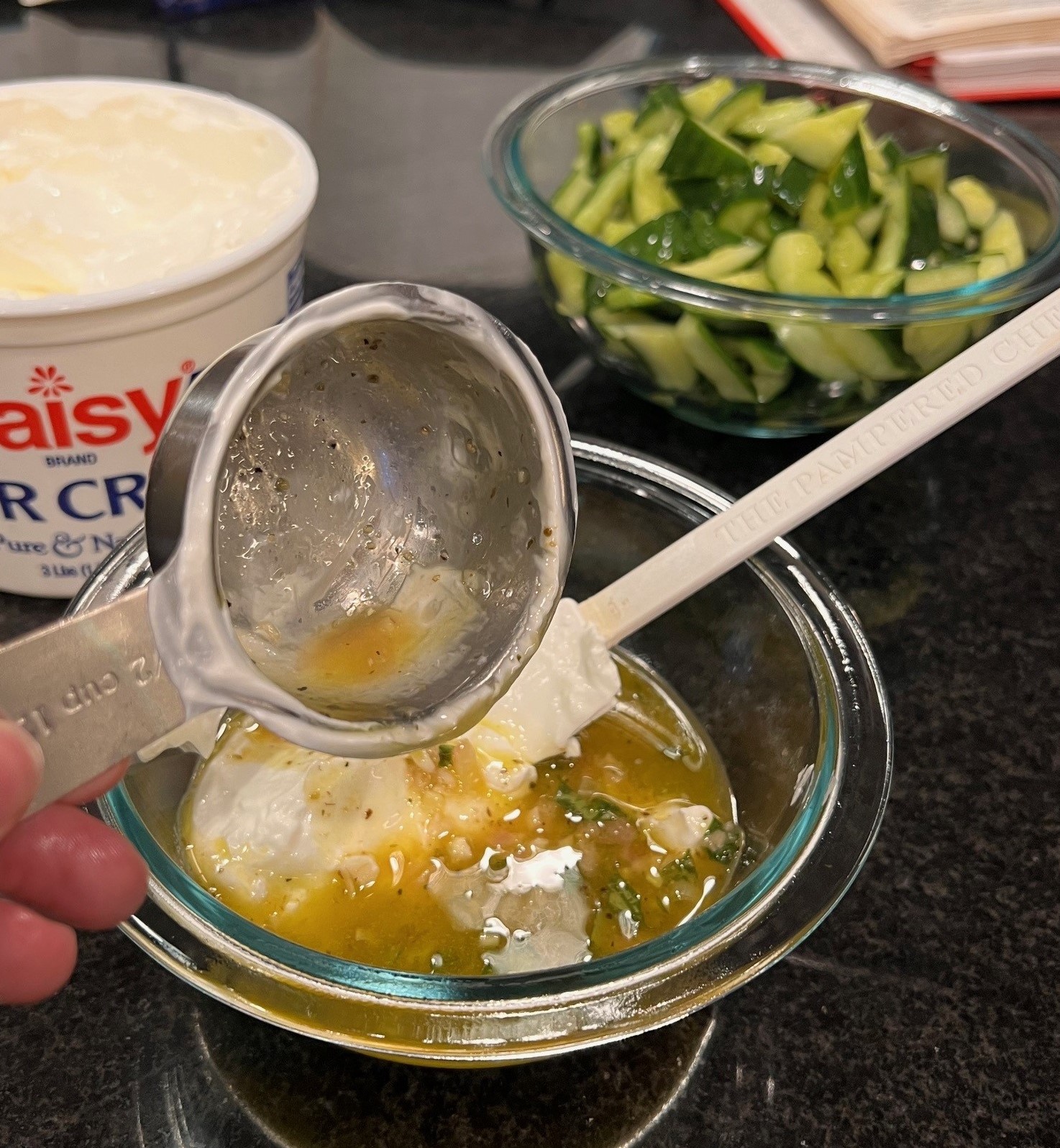
The dressing’s consistency was delightful—thick and creamy, with tiny bumps indicating the presence of shallots; much like whipped cream or a meringue, the dressing did not drip off the whisk when held out of the bowl.
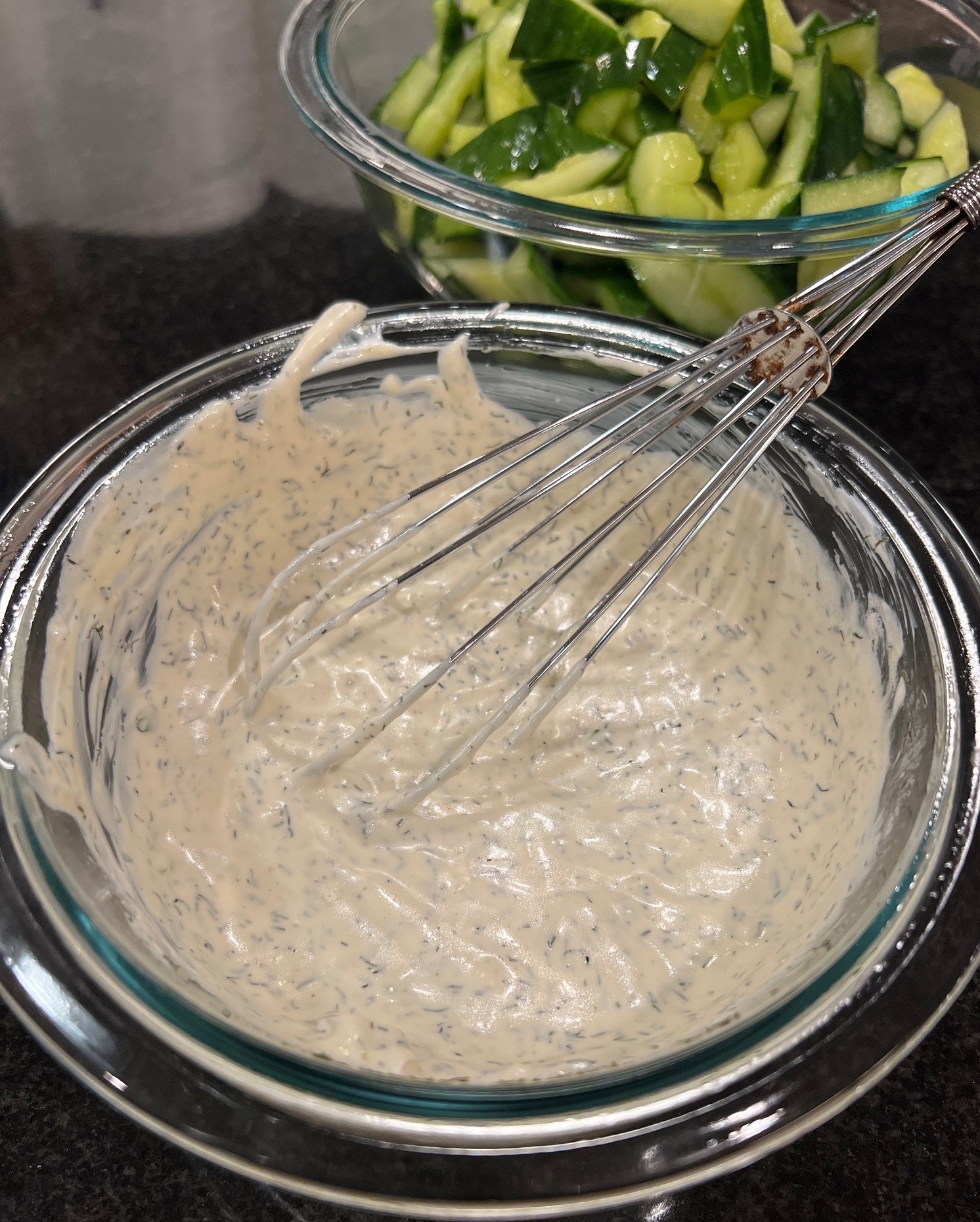

It also was interesting visually, with flecks of green from the dried dill interspersed throughout the creamy dressing. After pouring and scraping the dressing over the cucumbers, I mixed the two together, being sure to evenly coat the spears and took a quick bite to be sure it seemed on the right track before putting it back in the fridge to let the flavors blend overnight.
Assessment
My initial impression was that it was a beautiful salad, with the cucumber’s two different shades of green and ridged texture of the skin visible even through the thicker version of the dressing and mimicked with the dried dill. The blush-colored bits of shallot added an attractive contrast to the pale foundation and greens, as well as an additional element of varying texture. It looked elegant in both the serving bowl and in a small side bowl with dinner.
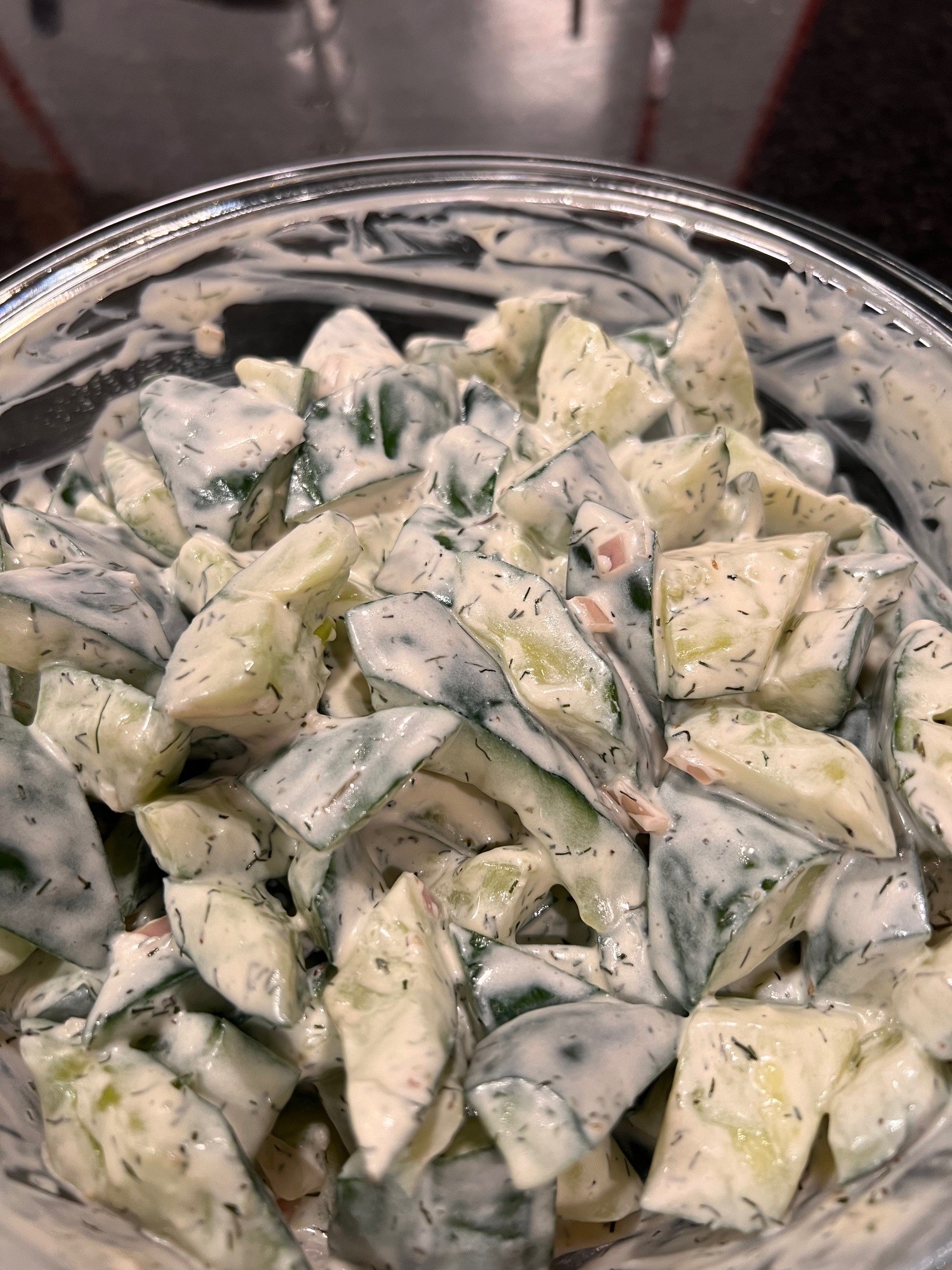
It also was tasty. Combining a rich, velvety, yet vinegary-tart Italian herb dressing with sour cream provided the best of all possible worlds (thanks, Candide): sour cream and vinegar offered a counterpoint to the lush taste and texture of olive oil and sour cream. And as Hesser promised, smashing to drain the water out of the cucumbers provided a crisp texture and a pleasing crunch, reminiscent of the “crack” heard when biting into a pickle. This version of the salad became a filling side dish, rather than a liquidy dressing topping my green salad.
Unlike the jello-based salads in The Joy of Sharing, whose presence at a potluck or a party would necessitate a great deal of explanatory context, I wouldn’t hesitate to take this updated version of “Simply Dilly Cukes” somewhere.
But I wouldn’t call it that.
I realize that “cucumber” is a long cumbersome word, and “cuke” is a common abbreviation that provides the speed abbreviations are designed to offer. But I just don’t like it—it seems too abrupt phonologically, using not merely one but rather two /k/ sounds, two voiceless velar stops/plosives. “Cuke” sounds too much like an expletive; English has always tended toward using plosives, particularly /k/ in its cussing (see—right there—so meta) as noted by linguists David Crystal and Amanda Montell, among others.
George Carlin famously played upon this phonological tendency in his bit about the seven words you can’t say on television. Go ahead, say them out loud and listen for those plosives, right now. Those sounds feel satisfying, which is why they’ve been used for centuries, throughout the many manifestations of English’s development. But “cuke” is too much like what Crystal describes as phonaesthetically unappealing—a word I don’t want to hear said out loud.
Maybe we should coin it as an expletive. I’ll start. I’ll let you know when it catches on.
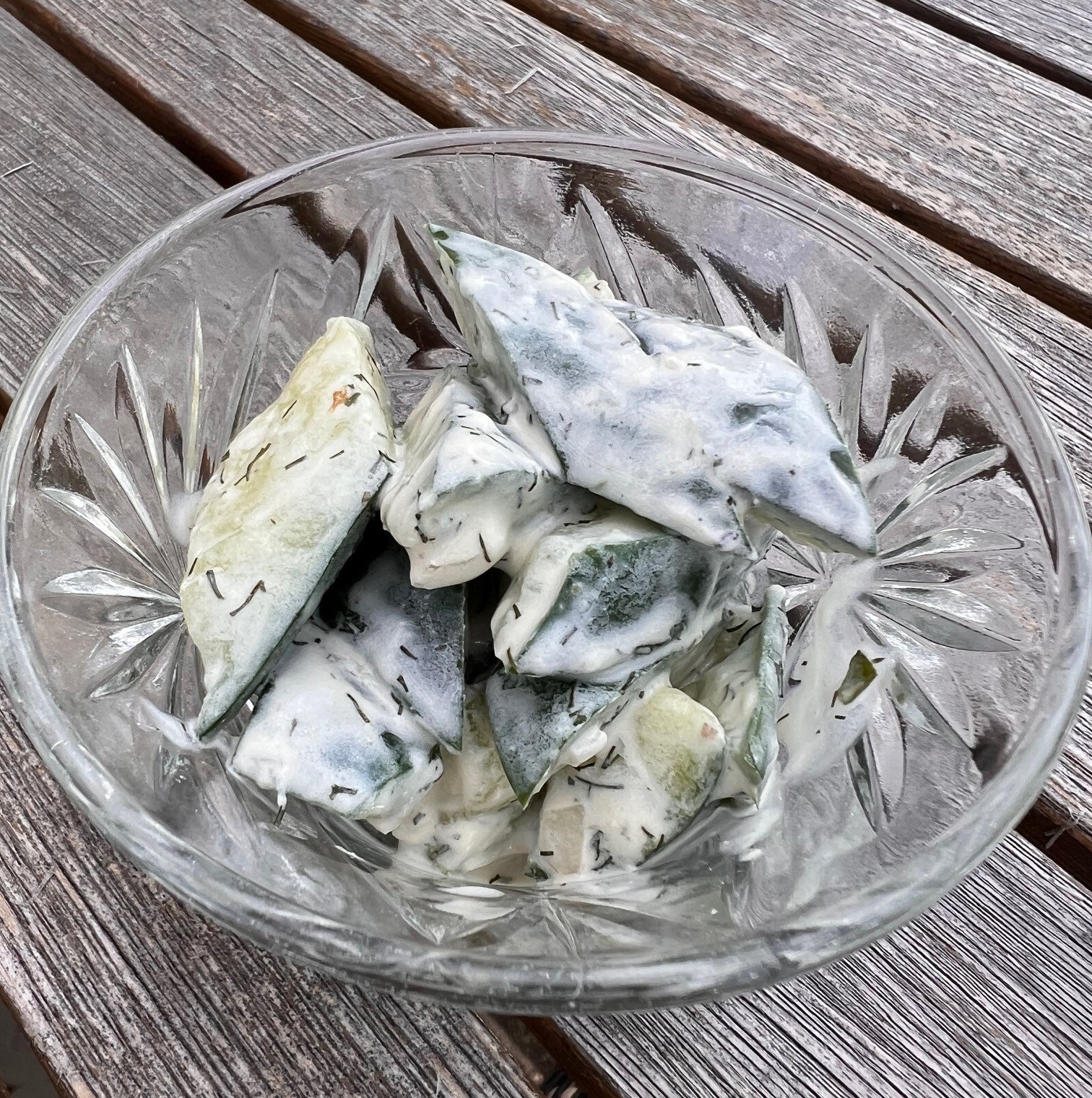
This post is part of an ongoing series in which I make and reflect on recipes and the people who contributed them to the 1985 Oak Valley Lutheran Church compiled cookbook, The Joy of Sharing.

